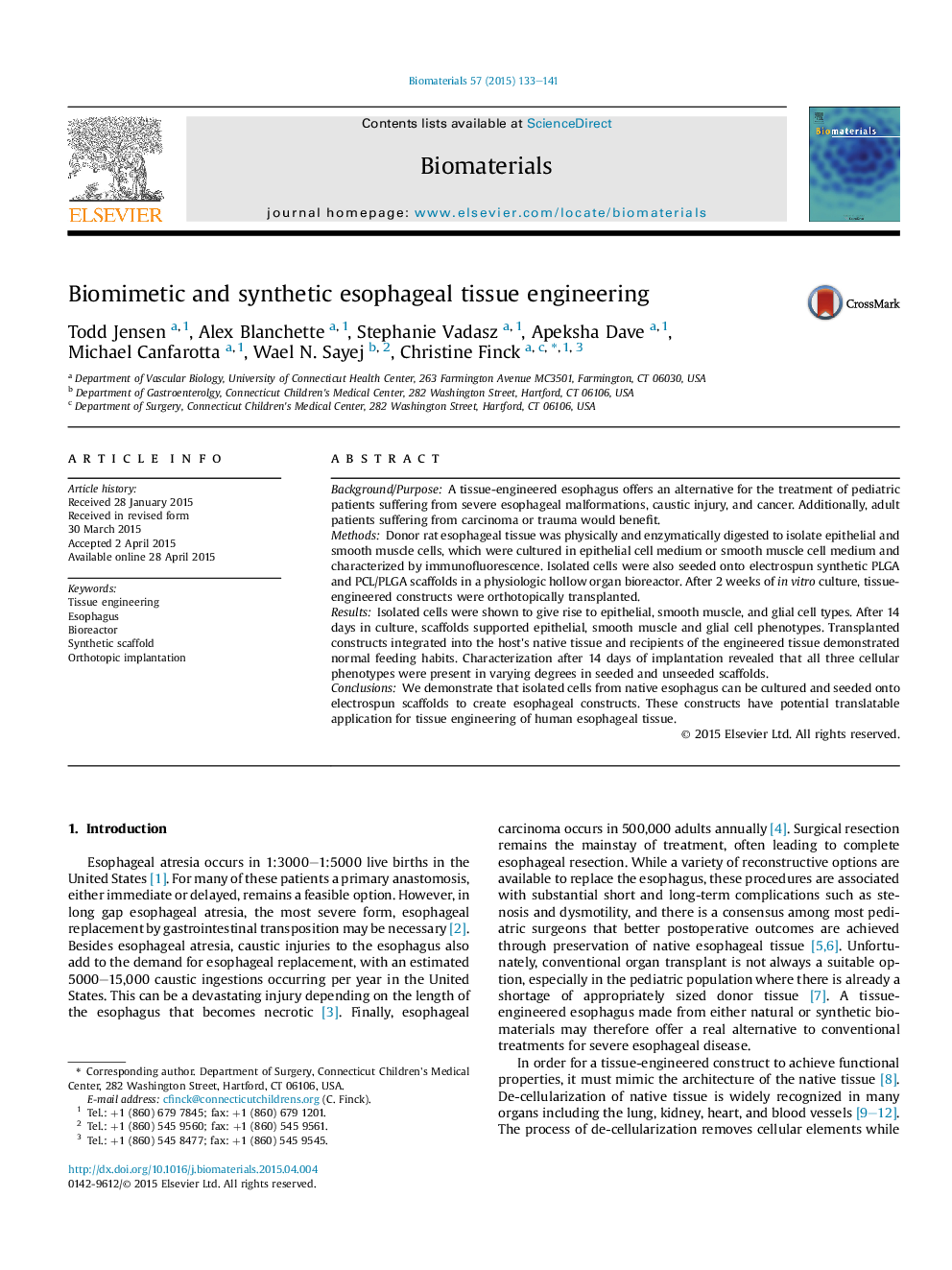| Article ID | Journal | Published Year | Pages | File Type |
|---|---|---|---|---|
| 5666 | Biomaterials | 2015 | 9 Pages |
Background/PurposeA tissue-engineered esophagus offers an alternative for the treatment of pediatric patients suffering from severe esophageal malformations, caustic injury, and cancer. Additionally, adult patients suffering from carcinoma or trauma would benefit.MethodsDonor rat esophageal tissue was physically and enzymatically digested to isolate epithelial and smooth muscle cells, which were cultured in epithelial cell medium or smooth muscle cell medium and characterized by immunofluorescence. Isolated cells were also seeded onto electrospun synthetic PLGA and PCL/PLGA scaffolds in a physiologic hollow organ bioreactor. After 2 weeks of in vitro culture, tissue-engineered constructs were orthotopically transplanted.ResultsIsolated cells were shown to give rise to epithelial, smooth muscle, and glial cell types. After 14 days in culture, scaffolds supported epithelial, smooth muscle and glial cell phenotypes. Transplanted constructs integrated into the host's native tissue and recipients of the engineered tissue demonstrated normal feeding habits. Characterization after 14 days of implantation revealed that all three cellular phenotypes were present in varying degrees in seeded and unseeded scaffolds.ConclusionsWe demonstrate that isolated cells from native esophagus can be cultured and seeded onto electrospun scaffolds to create esophageal constructs. These constructs have potential translatable application for tissue engineering of human esophageal tissue.
